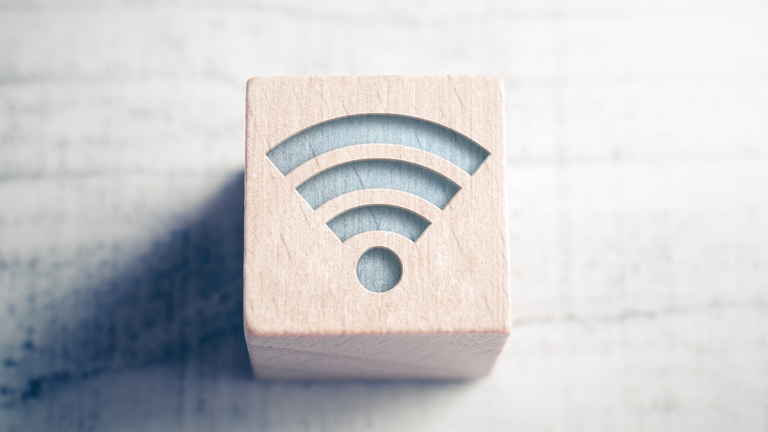WPA2 vs. WPA3: WiFi Security Protocols Explained
Confused about WiFi security protocols? Learn the differences between WPA2 and WPA3, plus how to enable WPA3 on your router!
Imagine deliberately leaving your front door unlocked when you leave the house. That would be an outrageous risk, and certainly one not worth taking.
Well, the same goes for your home WiFi network, which is why it’s important for us to have as many figurative locks as possible in place so cybercriminals can’t just waltz in through the front door.
Now, if we’re discussing WiFi security specifically, the digital “bouncers” we rely on are actually called wireless security protocols. Basically, their main role is to ensure that only trusted devices can connect to a network, but because not all protocols offer the same level of security, it’s best to know which is which.
With that in mind, today’s agenda is to explain how these protocols—particularly newer generations like WiFi Protected Access 2 and 3 (WPA2 and WPA3, respectively)—work, highlight their key differences, and help you enhance your network security by enabling WPA3 settings on your router.
📍 Quick Navigation
Interested in a particular topic? Feel free to hop over!
📈 The Evolution of WiFi Security: From WEP to WPA3 (Up next!)
🔒 How to Check & Enable WPA3 on Your Router for Better Security
❓ FAQs
📈The Evolution of WiFi Security: From WEP to WPA3
Learn how wireless security protocols have evolved over the years.
0️⃣ Wired Equivalent Privacy (WEP), 1997
As the world’s first attempt at WiFi security protocols, WEP offered a basic level of network security for connected users, but as one might expect, these also came with several major vulnerabilities. As a result, it was quickly deemed obsolete and replaced by WiFi Protected Access in the early 2000s.
⛔ Static Encryption Keys: WEP’s primary network defense tool, static encryption keys were highly susceptible to brute-force hacking attempts using automated tools, and as such offered middling amounts of protection.
⛔ High Collateral Damage: Once a key was compromised, a hacker would not simply be able to access an individual user’s network traffic, but all connected accounts on the entire network.
1️⃣WiFi Protected Access (WPA), 2003
Introduced in 2003, WPA (Wi-Fi Protected Access) was a stopgap security measure that improved upon WEP’s many flaws. However, hackers quickly found new weaknesses in the encryption algorithm, leading to the swift development and release of a second-generation, WPA2 the very next year.
✅ Dynamic Encryption: Introduced Temporal Key Integrity Protocol (TKIP), which changed encryption keys per packet to enhance security.
✅ Better Integrity Checks: WPA included Message Integrity Checks (MIC) to prevent data modification attacks.
2️⃣WiFi Protected Access 2 (WPA2), 2004
Introduced in 2004, WPA2 offered significantly better protections than WPA, and as such was quickly adopted as the industry standard for network security protocols. In fact, it remains the benchmark even today, which is actually quite an impressive feat!
✅ Advanced Encryption: WPA2 replaced TKIP with AES (Advanced Encryption Standard), a highly secure encryption method. This greatly improved user confidentiality while also reducing the risk of data interception, leading to stronger overall data protection for connected devices.
⛔ KRACK Vulnerability: Discovered in 2017, a Key Reinstallation Attack (KRACK) exploits a loophole in the “four-way handshake” verification used by the WPA2 protocol to connect devices with WiFi networks. Notably, it also requires the hacker to be in relatively close proximity to the target, as they would both have to share the same WiFi network in order for the former to intercept data.
3️⃣WiFi Protected Access 3 (WPA3), 2018
Introduced in 2018, WPA3 brought multiple major security improvements with it. These not only made brute-force attacks significantly harder for hackers, but also smoothened out network connections for the ever-increasing diversity of smart home and IoT devices.
✅ Stronger Authentication: WPA3 utilises Simultaneous Authentication of Equals (SAE) instead of WPA2’s Pre-Shared Key (PSK), making brute-force attacks significantly harder.
✅ Forward Secrecy: This feature prevents past communications from being decrypted, even if a hacker gains access to a session key.
✅ Enhanced Encryption: Supports 192-bit encryption for enterprise networks, strengthening security beyond WPA2’s 128-bit encryption. Additionally, Opportunistic Wireless Encryption (OWE) automatically encrypts open networks, enhancing protection for users on public WiFi networks.
✅ Improved IoT Security: WPA3 introduces Easy Connect, which simplifies secure connections for compatible smart home and IoT devices.
(Tip: Even though WPA3 makes public WiFi networks a bit safer, it’s still best to avoid using them where possible!)
🆚 WPA2 vs. WPA3: A Comparison
Generally, if your router supports WPA3, enabling it is highly recommended for stronger encryption, enhanced authentication, and better overall security. We’ll be talking more about how to do that in the next section, but for now, here’s an overview of how WPA2 stacks up against WPA3.
| Feature | WPA2 | WPA3 |
| Encryption Algorithm | AES-CCMP (128-bit) |
AES-CCMP (192-bit for Enterprise) |
| Key Exchange | Pre-Shared Key (PSK) | Simultaneous Authentication of Equals (SAE) |
| Protection vs. Offline Attack | Vulnerable to KRACK | Resistant to brute-force attacks |
| Public WiFi Security | No encryption on open networks | Opportunistic Wireless Encryption (OWE) |
| IoT Device Security | Limited security | Enhanced with Easy Connect |
| Forward Secrecy | Not supported | Supported |
🔒 How to Check & Enable WPA3 on Your Router for Better Security
A step-by-step guide.
- Log into your router’s settings interface by opening a web browser and entering your router’s IP address.
To find your router’s IP address using a computer, simply bring up Windows Command Prompt or Mac Terminal (depending on your device), then type in "ipconfig". The IP address should show up next to "Default Gateway".
- Once you’ve logged in, look around the security settings for a section labelled “Wireless Security”, “WiFi Security”, or something similar.
- Check the current security mode. If it says WPA2, check if there’s an option to enable WPA3. If there is one, enable it, and you’re all set!
🔧 What to Do if There’s No WPA3 Option
- Check for any pending firmware updates. Some routers do receive WPA3 support this way, and it never hurts to do it regardless.
- Consider upgrading your router to a newer model. If your router is several years old, there is a chance that it doesn’t support WPA3, so upgrading to a newer model may be the best option.
Tip: Regardless of the security protocol, users should always have a strong, complex password in place as their first line of defense!
💡 WPA2 vs. WPA3: Is it Worth It?
Absolutely! If security is a priority, WPA3 is the best option we have right now. With stronger encryption algorithms, protection against brute-force attacks, and improved security, WPA3 significantly enhances the safety of your network traffic, and by extension, you.
As such, if your router supports WPA3, it’s best to enable it as soon as you can. If it doesn’t, you might want to consider upgrading your router to a more recent model. Here at StarHub, we’ve got plenty of those to choose from, so make sure to take a gander at our Online Store.
At the end of the day, the goal of learning more about these wireless security protocols is to protect yourself and your loved ones from pesky cybercriminals. By staying ahead of the latest threats, you can better protect your personal data, while still enjoying the seamless, worry-free WiFi experiences we rely on so greatly.
For further reading, feel free to check out the following resources, as well as our FAQ section. Cheers!
👉 WiFi Explained: Frequency Bands, Wireless Standards & Optimising Performance
👉 Router Basics: Types, Functions and Setup Tips
👉 Why Is My WiFi Slow? Tips to Boost Speed, Signal, and Fix Disconnections
👉 What is Cyber Security? Definition, Threats, Best Practices & Why It Matters
❓ Frequently Asked Questions
Related Articles

What is Cyber Security? Definition, Threats, Best Practices & Why It Matters


What is WiFi? Frequency Bands, Wireless Standards & More


What Is Wi-Fi 7? All You Need to Know



 Back
Back

